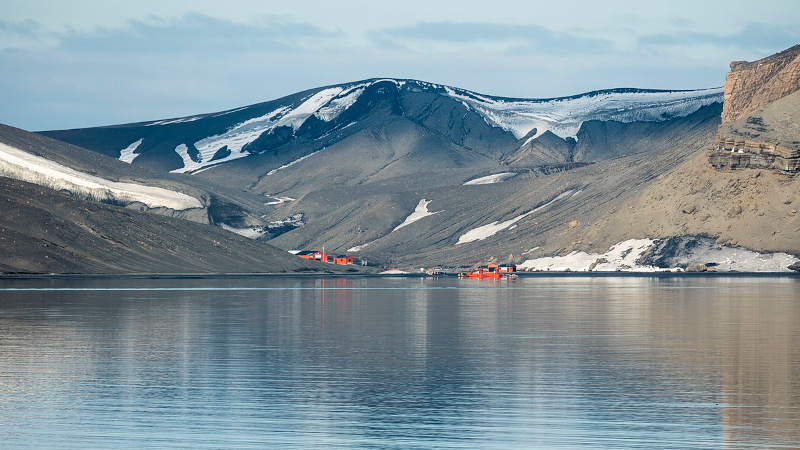

Deception Island, Antarctica: a poly-extreme ecosystem, the island experiences very high or very low temperatures, pH changes, and intense ultraviolet radiation (image: Andrew Shiva/Wikimedia Commons)
The substance is essential for the survival of microbes in extreme environments and has been shown to have antioxidant, emulsifying, and stabilizing properties.
The substance is essential for the survival of microbes in extreme environments and has been shown to have antioxidant, emulsifying, and stabilizing properties.

Deception Island, Antarctica: a poly-extreme ecosystem, the island experiences very high or very low temperatures, pH changes, and intense ultraviolet radiation (image: Andrew Shiva/Wikimedia Commons)
By Thais Szegö | Agência FAPESP – A bioactive compound produced by the microorganism Bacillus licheniformis, found on Deception Island in Antarctica, has properties that qualify it for use in producing food, cosmetics, pharmaceuticals, and biodegradable materials.
This finding is the result of a project led by the Chilean Antarctic Institute and supported by FAPESP through the Food Research Center (FoRC), a Research, Innovation, and Dissemination Center (RIDC) based at the University of São Paulo’s School of Pharmaceutical Sciences (FCF-USP) in Brazil.
The research results were published in the International Journal of Biological Macromolecules.
Deception Island was chosen as the focus of the study because it is a poly-extreme ecosystem, i.e., an environment with very high or very low temperatures, pH changes, and intense ultraviolet radiation. These characteristics force microorganisms in the region to develop special metabolic and physiological abilities.
One such adaptation is the production of exopolysaccharides, which are sugar polymers that are secreted by bacteria, fungi, yeasts, and algae and play a crucial role in protecting them from the stresses caused by the poly-extreme ecosystem. In hostile environments, the substance protects microbial cells from dehydration, osmotic pressure, toxic substances, and attacks by phages (viruses that infect bacteria), while also facilitating cell-to-cell communication (read more at agencia.fapesp.br/41500 and agencia.fapesp.br/53718).
“For this reason, we isolated a strain of Bacillus licheniformis found in fumarolic water [liquid present in an opening in the Earth’s crust where water vapor, gases, and minerals from volcanic activity are released], which despite being in Antarctica, reaches temperatures above 100 °C, and we analyzed its genome,” explains João Paulo Fabi, a professor at the Department of Food and Experimental Nutrition at FCF-USP. He is also supported in his studies by FAPESP and is one of the authors of the article.
Genomic sequencing identified genes related to the biosynthesis of exopolysaccharides with good resistance to ultraviolet radiation and thermal adaptation. In addition, its functional properties proved to be superior to those of commercial xanthan gum, which is produced by the bacterium Xanthomonas campestris and used as a thickener, stabilizer, and emulsifier in the food, pharmaceutical, and cosmetics industries.
“These characteristics make the exopolysaccharide produced by Bacillus licheniformis a strong candidate for biotechnological applications that require stability and bioactivity,” Fabi points out. “It offers antioxidant protection, a longer shelf life, emulsion stability, and texture improvement, particularly in functional foods. Its thermal stability and tolerance to extreme pH also make it promising for cosmetics, pharmaceuticals, and biodegradable materials in several other areas.”
The article “Structural characterization and biotechnological potential of an exopolysaccharide produced by Bacillus licheniformis F2LB isolated from Fumarole Bay of Deception Island, Antarctica” can be read at www.sciencedirect.com/science/article/abs/pii/S0141813025066711.
Republish
The Agency FAPESP licenses news via Creative Commons (CC-BY-NC-ND) so that they can be republished free of charge and in a simple way by other digital or printed vehicles. Agência FAPESP must be credited as the source of the content being republished and the name of the reporter (if any) must be attributed. Using the HMTL button below allows compliance with these rules, detailed in Digital Republishing Policy FAPESP.





